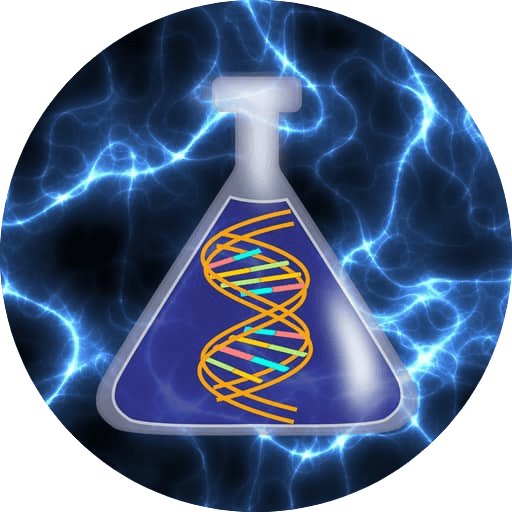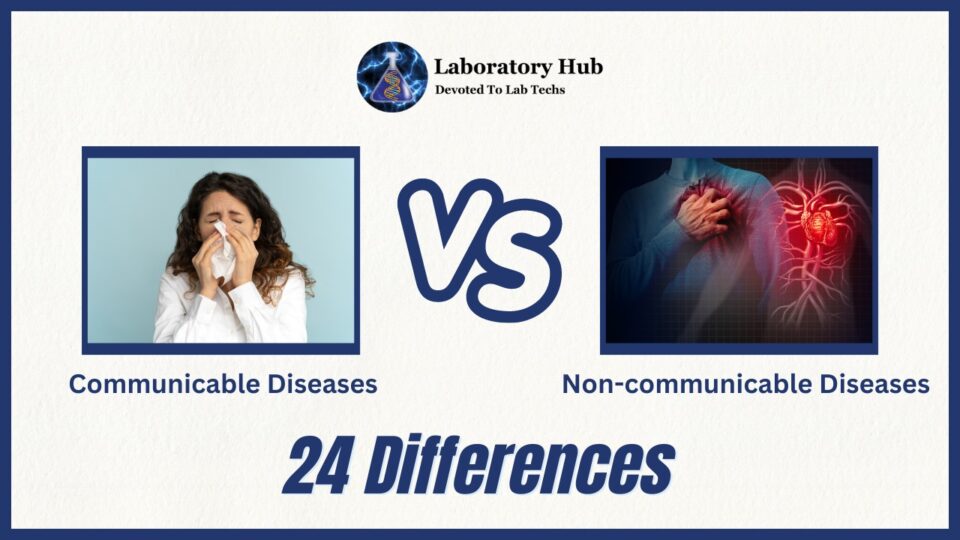Disease has always plagued humanity. Diseases are either contagious or not. Germs cause communicable diseases. Non-communicable diseases don’t spread through casual contact and don’t have an infectious cause. Communicable diseases have caused pandemics and epidemics throughout human history. Bacteria, viruses, fungi, and parasites can cause these illnesses. Transmission can occur by inhalation, ingestion, skin-to-skin contact, sexual activity, mosquito or tick bites, and more.
Non-communicable diseases are caused more by lifestyle, genetics, and environmental exposures. They cause the most deaths worldwide and start slowly. Non-communicable illnesses include cardiovascular, cancer, chronic respiratory, diabetes, mental health, and others. Non-communicable diseases are linked to unhealthy diets, inactivity, cigarette and alcohol use, environmental pollutants, genetic susceptibility, and socioeconomic status.
Non-communicable diseases are chronic and require long-term care, but communicable diseases may spread quickly, causing epidemics and requiring public health measures. However, communicable and noncommunicable disorders are not always clear-cut. Non-communicable diseases can be contagious, and certain communicable diseases can become chronic.
Focusing on communicable and non-communicable diseases improves global health. Vaccination efforts, greater sanitation and hygiene, more drinkable water, the eradication of disease-carrying vectors, and quick diagnosis and treatment help prevent infectious diseases. Non-communicable diseases require a more comprehensive strategy that promotes healthy lifestyles, detects and controls risk factors, and provides affordable and accessible treatment.
In conclusion, understanding communicable and non-communicable diseases is crucial for disease prevention and treatment. Non-communicable diseases, which are largely influenced by lifestyle and inherited factors, are not contagious. Both diseases threaten global health and require multi-pronged therapy. Education, prevention, and healthcare can lower the global burden of communicable and noncommunicable diseases and enhance global health.
|
S. No. |
Aspect |
Communicable Diseases |
Non-communicable Diseases |
|
1 |
Definition |
Diseases caused by infectious agents (pathogens) that can be transmitted from one person to another |
Diseases not caused by infectious agents and cannot be transmitted from one person to another |
|
2 |
Transmission |
Spread through direct or indirect contact with infected individuals, contaminated objects, or vectors (such as mosquitoes) |
Not spread through direct contact or vectors; primarily influenced by genetic, lifestyle, and environmental factors |
|
3 |
Examples |
Influenza, tuberculosis, HIV/AIDS, malaria |
Cardiovascular diseases, diabetes, cancer, Alzheimer’s disease |
|
4 |
Contagiousness |
Highly contagious and can spread rapidly |
Not contagious and do not spread from person to person |
|
5 |
Pathogens |
Caused by bacteria, viruses, parasites, and fungi |
Not caused by specific infectious agents |
|
6 |
Prevention |
Vaccination, hygiene practices, vector control |
Lifestyle modifications, early detection, medication adherence |
|
7 |
Treatment |
Antibiotics, antiviral drugs, antiparasitic drugs |
Medications, surgery, lifestyle modifications |
|
8 |
Public Health Focus |
Outbreak management, contact tracing, immunization campaigns |
Chronic disease management, health promotion, and prevention programs |
|
9 |
Immunity |
Immunity can be acquired through infection or vaccination |
No immunity acquired through direct exposure |
|
10 |
Disease Control |
Can be controlled or eliminated through public health measures |
Require long-term management and control strategies |
|
11 |
Global Impact |
Major global health concerns, impact low-income countries |
The leading cause of death worldwide, affect individuals across all income levels |
|
12 |
Environmental Factors |
Transmitted through environmental sources (water, air, vectors) |
Less influenced by environmental factors |
|
13 |
Epidemics |
Can cause epidemics and pandemics |
Not associated with epidemics or pandemics |
|
14 |
Incubation Period |
Can have varying incubation periods before symptoms appear |
Generally no specific incubation period |
|
15 |
Risk Factors |
Exposure to infected individuals or vectors, poor sanitation, lack of immunization |
Genetic predisposition, lifestyle choices (smoking, diet), environmental exposures |
|
16 |
Disease Course |
Acute or chronic course depending on the disease |
Chronic diseases with progressive symptoms |
|
17 |
Prevention Focus |
Focus on interrupting transmission and controlling outbreaks |
Focus on prevention, early detection, and disease management |
|
18 |
Herd Immunity |
Achieving herd immunity can reduce transmission in the population |
No concept of achieving herd immunity |
|
19 |
Primary Prevention |
Vaccination, vector control, hygiene practices |
Health education, risk factor modification |
|
20 |
Public Health Interventions |
Disease surveillance, outbreak investigations |
Health promotion, screening programs, chronic disease management |
|
21 |
Social Impact |
Can have a significant social stigma and fear associated with the disease |
May have social impact but less stigmatization |
|
22 |
Screening |
Used for early detection and prevention of outbreaks |
Used for early detection and management of diseases |
|
23 |
Global Initiatives |
Global campaigns for disease eradication and control |
Global initiatives for prevention and disease management |
|
24 |
Impact on Healthcare System |
Requires management of outbreaks, isolation, and quarantine measures |
Requires long-term healthcare management, specialized services |
Also read: Meningitis vs Encephalitis- 20 Differences
Frequently Asked Questions (FAQS)
Q1. What are Communicable diseases?
Microorganisms including bacteria, viruses, fungus, and parasites cause communicable diseases. They can spread by direct or indirect contact, airborne vectors, or insects.
What illnesses are communicable?
Influenza, TB, malaria, HIV/AIDS, hepatitis, measles, chickenpox, gonorrhea, and syphilis are infectious illnesses.
Q3.How do communicable diseases spread?
Coughing, sneezing, contaminated food and drink, sexual contact, and vectors like mosquitoes and ticks spread communicable illnesses.
Q4. What are non-communicable diseases?
Non-communicable diseases (NCDs) are illnesses that are not contagious. Lifestyle, genetics, or both often cause them.
Q5. What are some examples of non-communicable diseases?
Non-communicable illnesses include heart disease, stroke, cancer, asthma, COPD, diabetes, and mental health problems including depression and anxiety.
Q6.What are the risk factors for communicable diseases?
Poor sanitation and hygiene, lack of clean water, overcrowding, impaired immune systems, unprotected sexual activity, and vector or polluted settings are communicable disease risk factors.
Q7. What are the risk factors for non-communicable diseases?
Unhealthy diets, physical inactivity, cigarette and alcohol use, environmental contaminants, genetic predisposition, poverty, and poor healthcare access are risk factors for non-communicable illnesses
Q8. Can communicable diseases become non-communicable?
Chronic illnesses can become non-communicable. HIV/AIDS, a communicable disease, can become chronic and require long-term therapy.
Q9. Can non-communicable diseases be prevented?
Healthy lifestyle choices including eating a balanced diet, exercising regularly, avoiding cigarettes and alcohol, and getting regular checkups help prevent many non-communicable illnesses.
Q10. Are communicable illnesses worse than non-communicable ones?
The health hazards of communicable and non-communicable diseases vary with disease, population, and healthcare resources. Non-communicable diseases are persistent and can cause long-term health issues, whereas communicable infections can spread quickly.
User Review
( votes)
Laboratory Hub aims to provide the Medical Laboratory Protocols & General Medical Information in the most easy to understand language so that the Laboratory Technologist can learn and perform various laboratory tests with ease. If you want any protocol to be published on Laboratory Hub, Please drop a mail at contact@laboratoryhub.com. Happy Learning!

